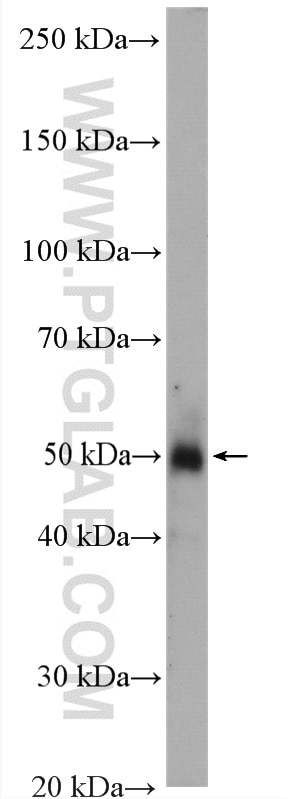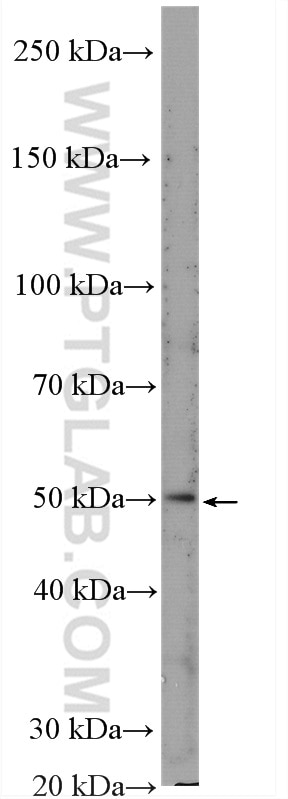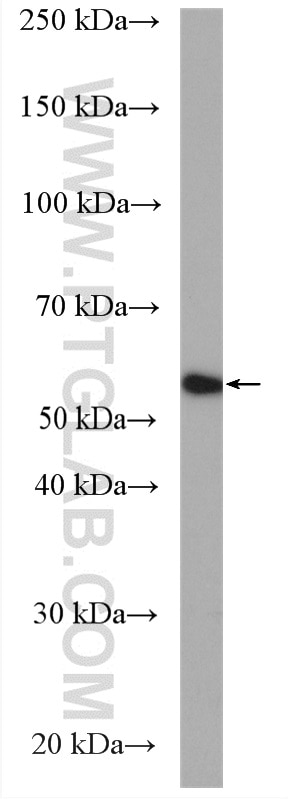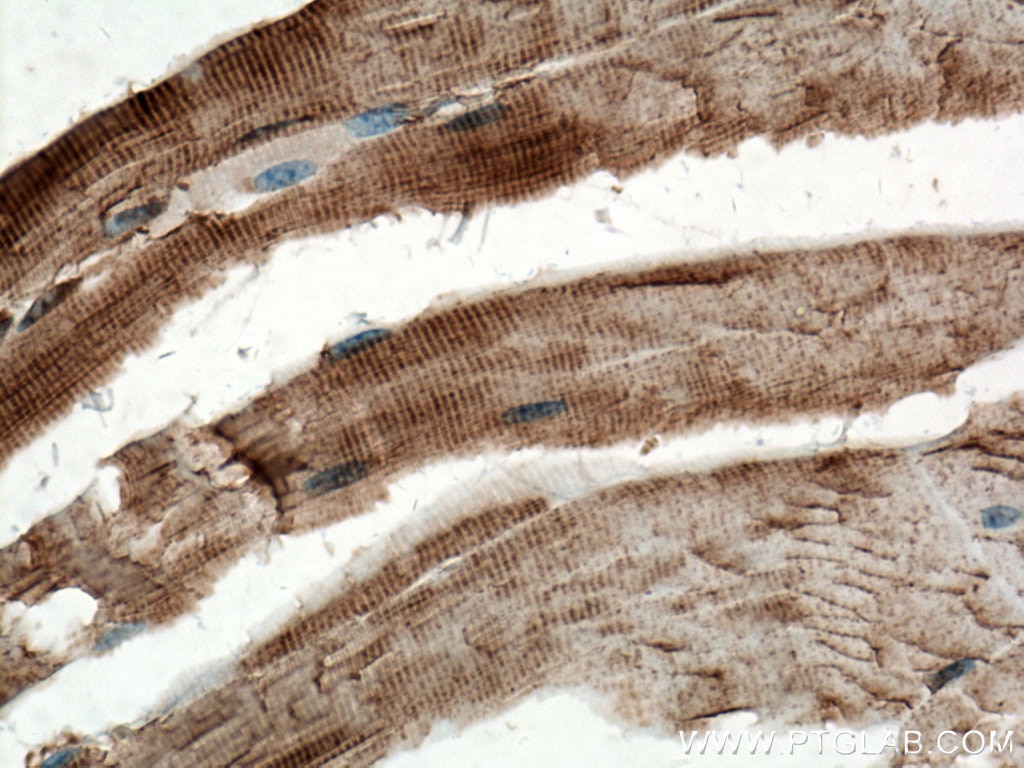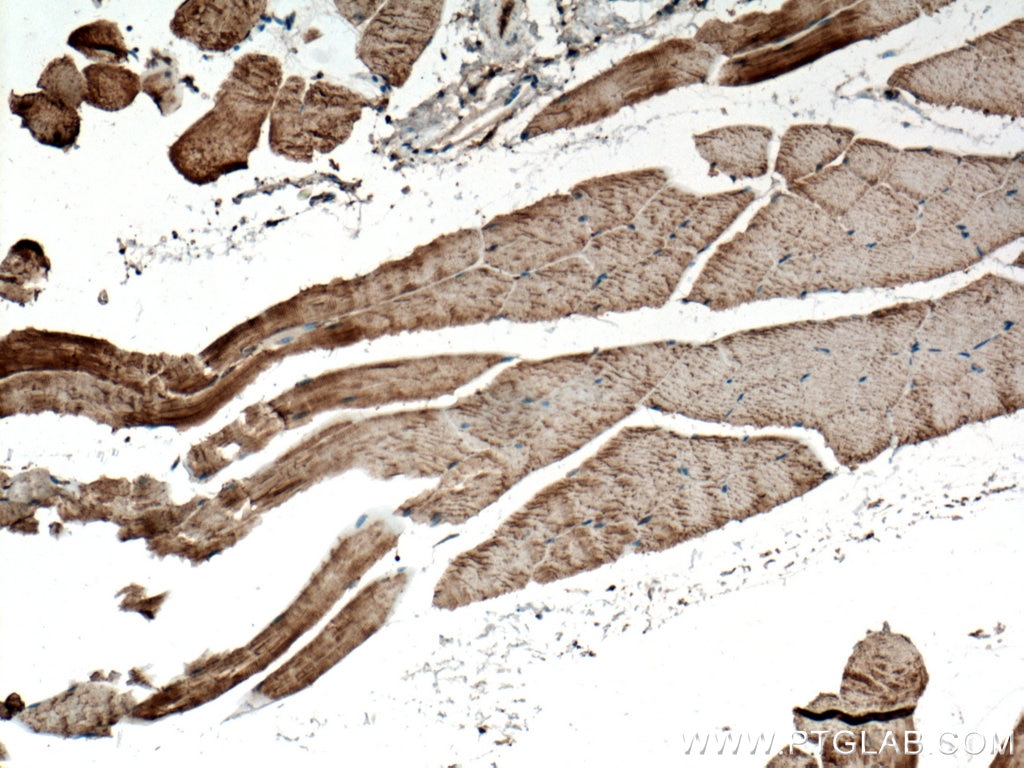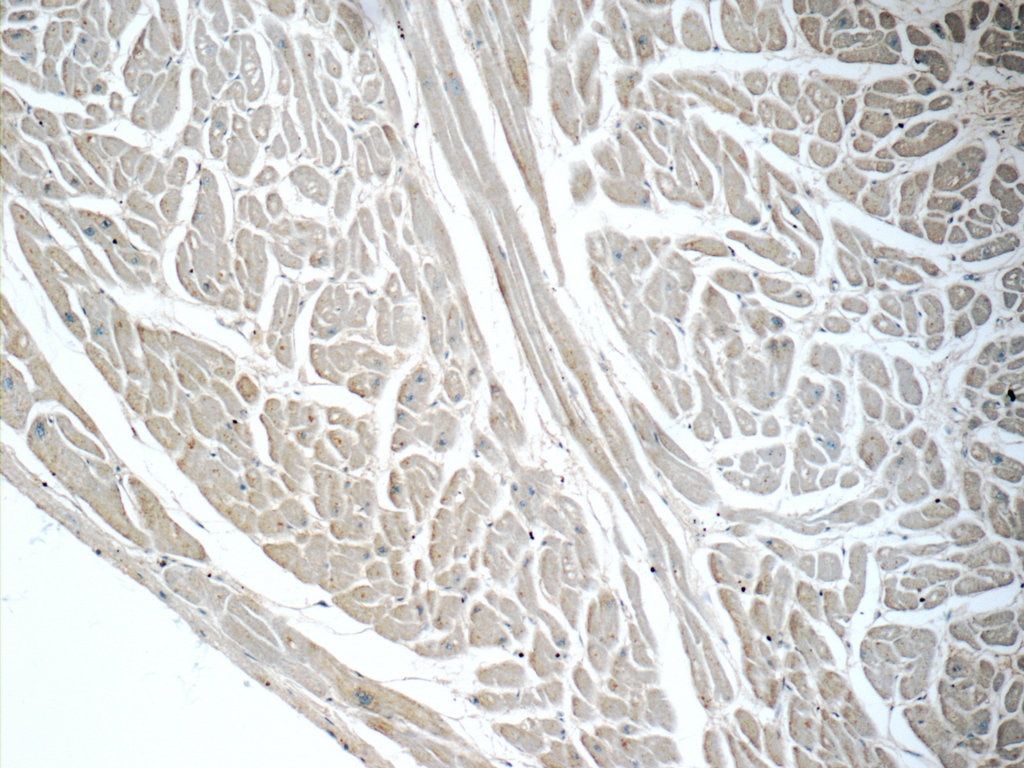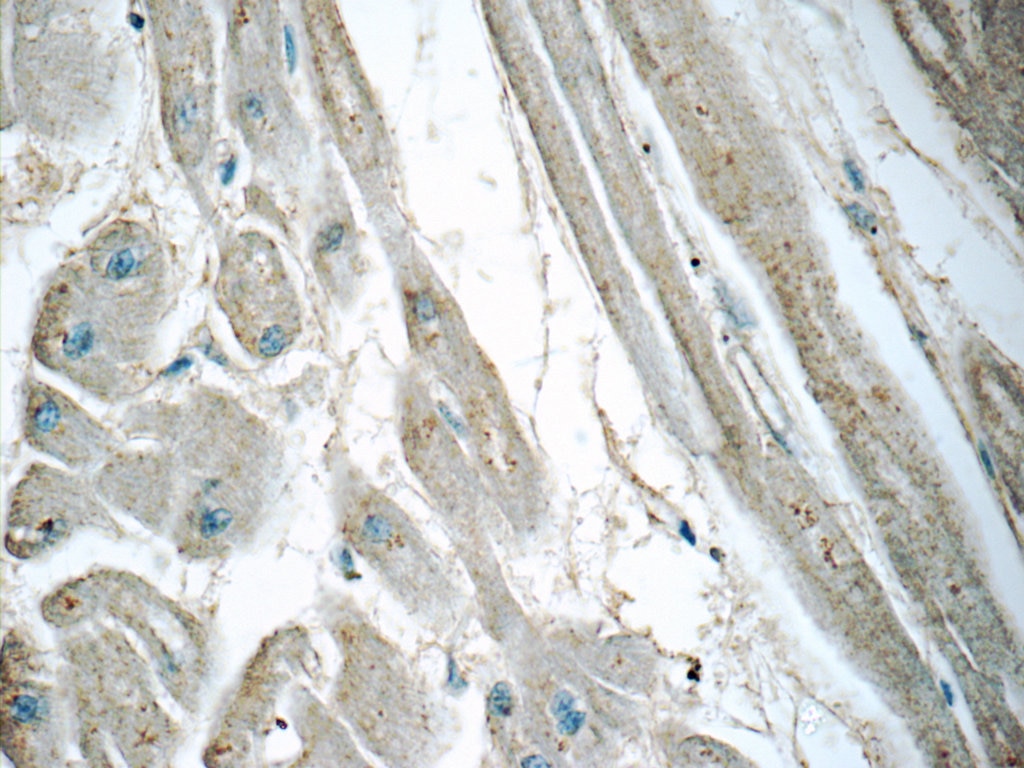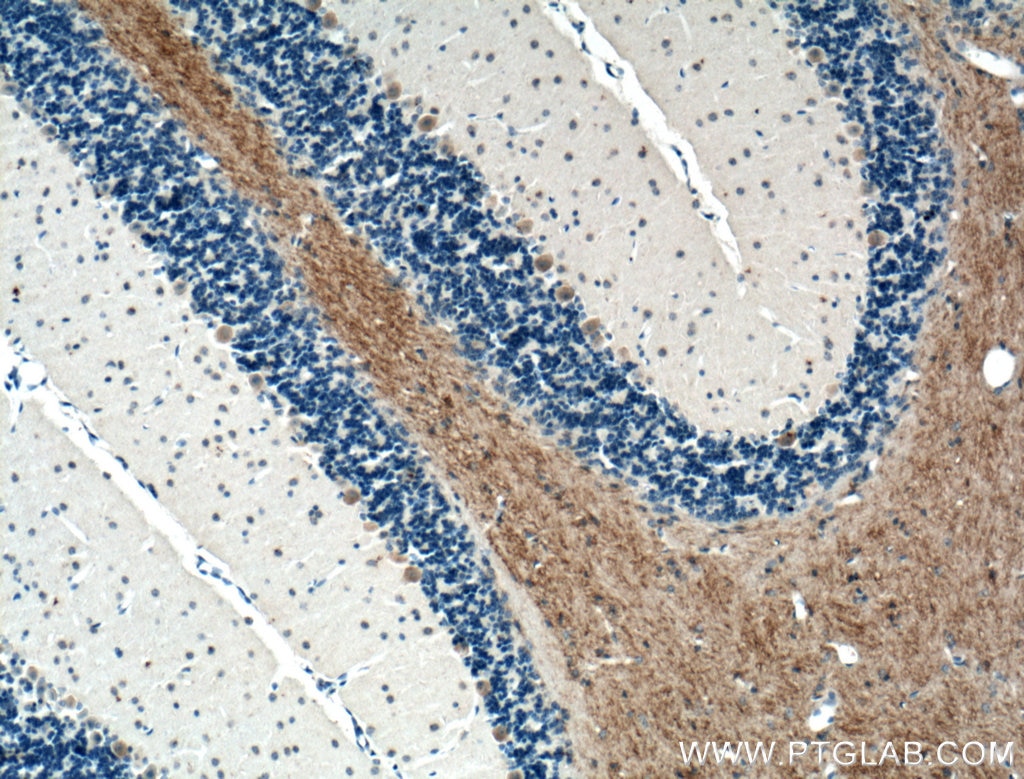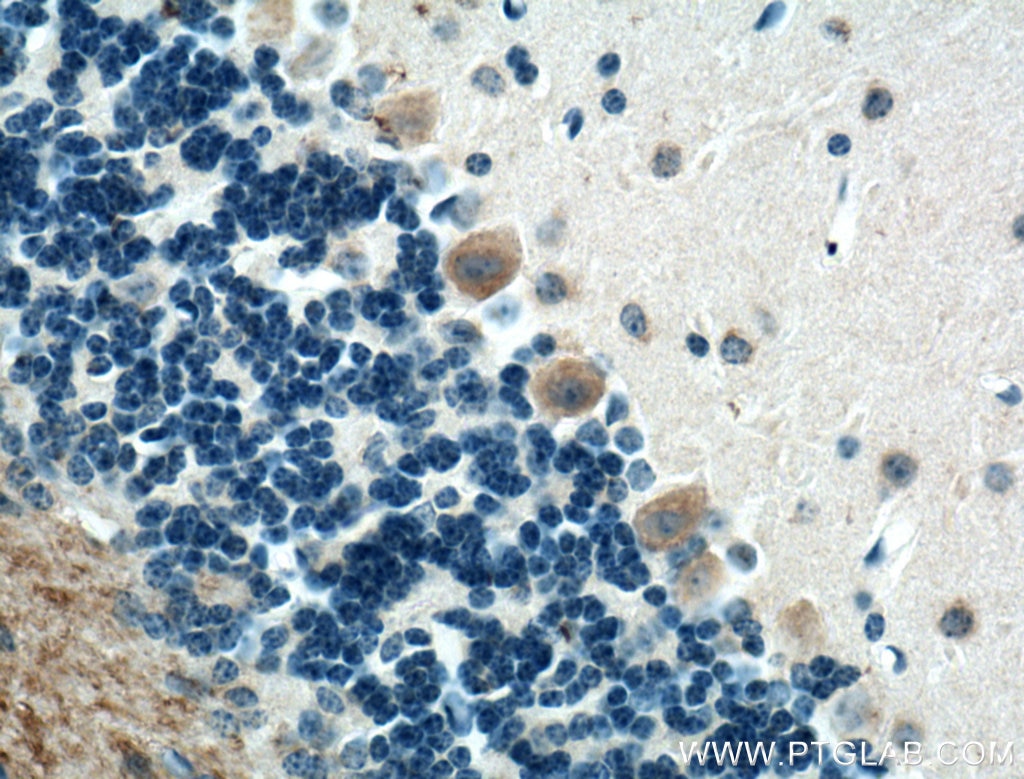GLUT4 Polyklonaler Antikörper
GLUT4 Polyklonal Antikörper für IHC, ELISA
Wirt / Isotyp
Kaninchen / IgG
Getestete Reaktivität
human, Maus, Ratte und mehr (1)
Anwendung
IHC, IF, ELISA
Konjugation
Unkonjugiert
Kat-Nr. : 21048-1-AP
Synonyme
Geprüfte Anwendungen
| Erfolgreiche Detektion in WB | Maus-Fettgewebe, Maushirngewebe, Rattenhirngewebe |
| Erfolgreiche Detektion in IHC | Maus-Skelettmuskelgewebe, humanes Herzgewebe, Maus-Cerebellum-Gewebe Hinweis: Antigendemaskierung mit TE-Puffer pH 9,0 empfohlen. (*) Wahlweise kann die Antigendemaskierung auch mit Citratpuffer pH 6,0 erfolgen. |
Empfohlene Verdünnung
| Anwendung | Verdünnung |
|---|---|
| Western Blot (WB) | WB : 1:200-1:500 |
| Immunhistochemie (IHC) | IHC : 1:50-1:500 |
| It is recommended that this reagent should be titrated in each testing system to obtain optimal results. | |
| Sample-dependent, check data in validation data gallery | |
Veröffentlichte Anwendungen
| IHC | See 2 publications below |
| IF | See 1 publications below |
Produktinformation
21048-1-AP bindet in IHC, IF, ELISA GLUT4 und zeigt Reaktivität mit human, Maus, Ratten
| Getestete Reaktivität | human, Maus, Ratte |
| In Publikationen genannte Reaktivität | human, Maus, Ratte, Brandts Mongolische Wühlmaus (Lasiopodomys brandtii) |
| Wirt / Isotyp | Kaninchen / IgG |
| Klonalität | Polyklonal |
| Typ | Antikörper |
| Immunogen | GLUT4 fusion protein Ag15390 |
| Vollständiger Name | solute carrier family 2 (facilitated glucose transporter), member 4 |
| Berechnetes Molekulargewicht | 509 aa, 55 kDa |
| Beobachtetes Molekulargewicht | 50-55 kDa |
| GenBank-Zugangsnummer | BC069615 |
| Gene symbol | GLUT4 |
| Gene ID (NCBI) | 6517 |
| Konjugation | Unkonjugiert |
| Form | Liquid |
| Reinigungsmethode | Antigen-Affinitätsreinigung |
| Lagerungspuffer | PBS with 0.02% sodium azide and 50% glycerol |
| Lagerungsbedingungen | Bei -20°C lagern. Nach dem Versand ein Jahr lang stabil Aliquotieren ist bei -20oC Lagerung nicht notwendig. 20ul Größen enthalten 0,1% BSA. |
Hintergrundinformationen
Glucose transporter 4 (GLUT4), also known as solute carrier family 2, facilitated glucose transporter member 4 (SLC2A4), is a transporter protein regulating glucose transport across cell membranes in an insulin-dependent manner.
What is the molecular weight of GLUT4? Is GLUT4 post-translationally modified?
The molecular weight of GLUT4 transporter is 55 kDa. GLUT4 can be N-glycosylated, which is important for its stability and trafficking between the recycling compartment and plasma membrane (PMID: 21757715 and 22545627), and it can also be ubiquitinated and phosphorylated (PMID: 23665900).
What is the subcellular localization of GLUT4?
Glucose transporters, including GLUT4, are multiple-pass integral membrane proteins. GLUT4 is present at the plasma membrane but is also a subject of recycling between plasma membrane and endosomes. The localization of GLUT4 depends on stimulation with insulin - in basal conditions GLUT4 is retained intracellularly, while upon insulin stimulation it is translocated to the plasma membrane (PMID: 18570632).
What molecules can be transported by GLUT4?
Although the main substrate of GLUT4 transport is glucose, it can also transport glucosamine.
What is the tissue expression pattern of GLUT4?
GLUT4 is expressed in white and brown adipose tissue and in muscle and heart cells, where it is the main glucose transporter responsible for peripheral glucose uptake in response to insulin.
Which cell lines can be used to study insulin-dependent GLUT4 protein translocation in glucose uptake assays?
Fat and muscle cells are primarily used in glucose uptake assays because they physiologically respond to insulin (PMID: 26646194). The most commonly used cell lines are 3T3-L1 cells (murine pre-adipose fibroblasts), L6 cells (rat myoblasts), and C2C12 cells (murine myoblasts).
Protokolle
| PRODUKTSPEZIFISCHE PROTOKOLLE | |
|---|---|
| WB protocol for GLUT4 antibody 21048-1-AP | Protokoll herunterladen |
| IHC protocol for GLUT4 antibody 21048-1-AP | Protokoll herunterladenl |
| STANDARD-PROTOKOLLE | |
|---|---|
| Klicken Sie hier, um unsere Standardprotokolle anzuzeigen |
Publikationen
| Species | Application | Title |
|---|---|---|
Biomed Pharmacother Qing brick tea (QBT) aqueous extract protects monosodium glutamate-induced obese mice against metabolic syndrome and involves up-regulation Transcription Factor Nuclear Factor-Erythroid 2-Related Factor 2 (Nrf2) antioxidant pathway. | ||
J Hematol Oncol The PIK3CA E542K and E545K mutations promote glycolysis and proliferation via induction of the β-catenin/SIRT3 signaling pathway in cervical cancer. | ||
Development LONP1-mediated mitochondrial quality control safeguards metabolic shifts in heart development. | ||
Cell Physiol Biochem PGC-1α Participates in the Protective Effect of Chronic Intermittent Hypobaric Hypoxia on Cardiomyocytes. | ||
Food Chem Toxicol 3-Chloro-1, 2-propanediol inhibits autophagic flux by impairment of lysosomal function in HepG2 cells. | ||
J Cell Mol Med FGF19 protects skeletal muscle against obesity-induced muscle atrophy, metabolic derangement and abnormal irisin levels via the AMPK/SIRT-1/PGC-α pathway. |
